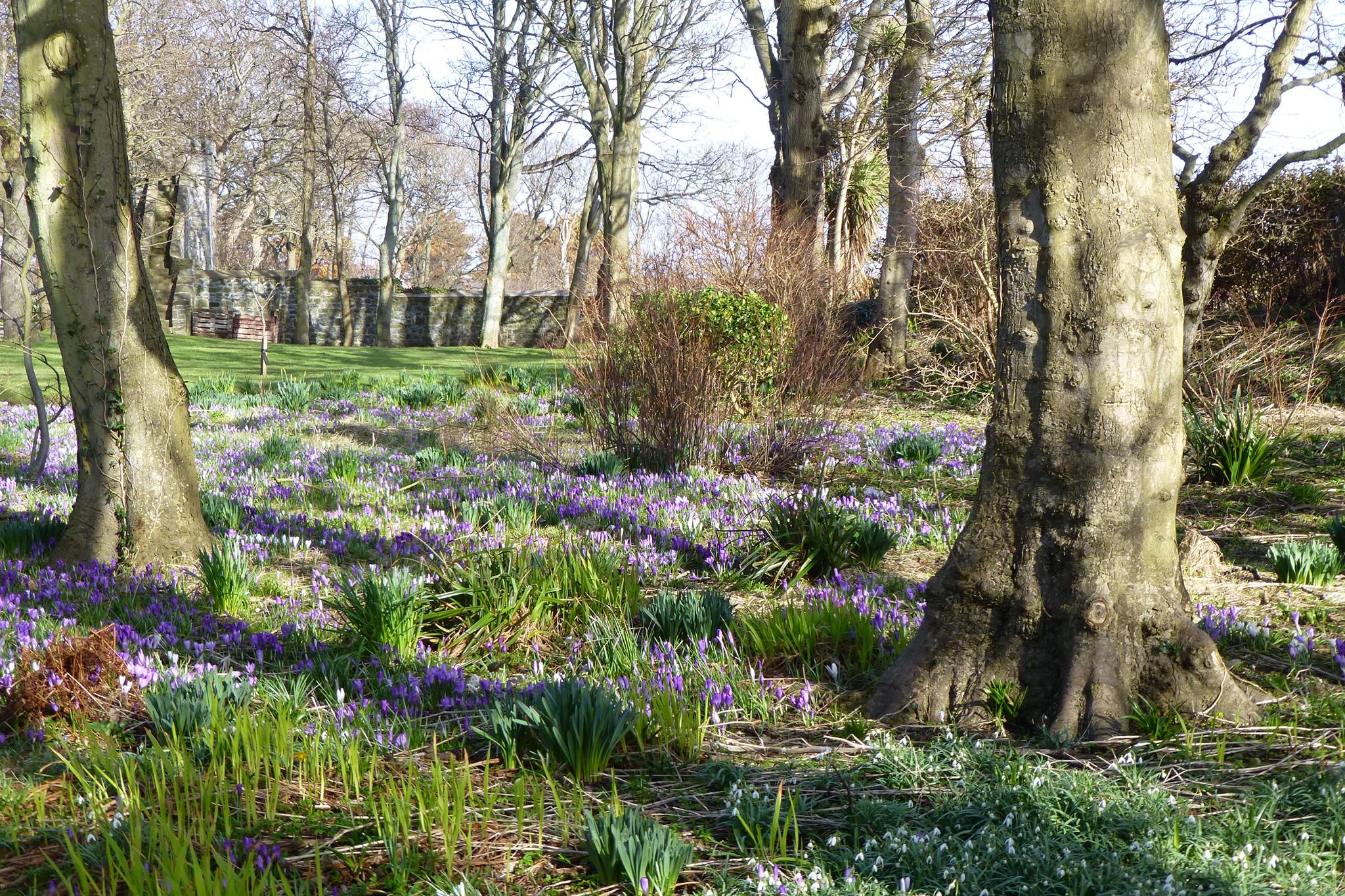I have recently written about the benefits of street trees and how they can be planted without causing conflict. Street trees fit within the broader category of ‘urban trees’ which can also be located in parks, public gardens, urban woodlands, schools, church yards, and many other public spaces, not to mention privately owned trees which present rather different challenges. Collectively, all the trees in and around urban areas can also be known as the ‘urban forest’. The benefits of urban trees are well documented – the Arboricultural Association provide a good summary here – so I will not bang on about it.
In this blog I would like to share my thoughts on what the barriers might be to effectively managing urban trees in the Isle of Man. As the main urban centre, I am mainly thinking of Douglas, but some of these barriers apply to other towns such as Ramsey, Peel and Port Erin.
The biggest issue, as I see it, is the highly fragmented nature of urban tree ownership and management. Let’s consider some of the organisations involved. DEFA’s estate is mostly rural but they do manage a few key urban-fringe woodlands. In Ramsey, one of these is now managed by the Manx Wildlife Trust. Being the owners of many local parks and amenity spaces, local authorities are a major stakeholder. The DoI is another major stakeholder, but the urban trees they are responsible for are split between two separate Divisions. The Highway Services Division is responsible for all the street trees and trees growing in roadside verges. The Public Estates and Housing Division is responsible for managing trees around our public buildings (e.g. schools, health centres, sports facilities).
Each of these bodies on its own is too small to be reasonably expected to have adequate skills and resources at its disposal for managing urban trees effectively.
These silos also mean there is no coordinated, strategic approach among stakeholders to manage urban trees. It’s also the reason there is no baseline data on urban tree canopy cover (see September 2022 blog post for further detail), or the species profile, age-structure and condition of our urban tree population. Without baseline data and a strategic approach, if it does occur, management will only ever be reactive, responding to issues as they emerge, rather than proactively planning and acting towards an improved urban forest. As well as making much better use of existing resources, adopted strategies and collaborative working are a way of securing new funding, as politicians (and their dreaded bean counters) start to realise that investment delivers tangible benefits. Strategic documents can also help to raise the profile of urban trees, generating public support and awareness.

The Isle of Man is not alone when it comes to having a lack of strategic oversight for urbans trees, however. A recent research paper reported that only 41% of English Local Authorities (LAs) have a tree strategy, and this figure drops to 22% for rural areas. Interestingly, two-tier local authorities (e.g. overlapping county and district councils) were also found to be less likely to have a tree strategy. The author of the research suggests that this may be due to ambiguity over which level of local government is responsible for tree management. Is that what is happening here with our fragmented urban forest?
Perhaps not a ‘barrier’ as such, the planning system in the Isle of Man is also an issue. The Area Plan for the East failed to undertake an assessment of Green Infrastructure in and around our capital. The Strategic Plan also has very little to say about the importance of urban trees and what role development in urban areas plays in contributing to (or hindering!) the urban forest. If the Island is serious about promoting sustainable development, we need to get serious about our urban forests. Urban trees are an important tool for climate change adaptation; they help to lessen the impact of extreme weather events. Urban trees also help the local economy by attracting investment and creating favourable environments for retail and hospitality. In July 2022 I wrote about the poor results we are seeing from soft landscaping and tree planting associated with new developments, which shows, whether it’s a policy, development control or enforcement issue, something isn’t working.
The aforementioned research paper discusses the possibility of making tree strategies mandatory for LAs and setting a template through an (England and Wales) National Tree Strategy. This would be a positive step forward for the adjacent isle and, by setting an example, may make it easier to generate public and political interest in being more proactive about the management of our own urban trees. How degraded will our urban forests become though, if we wait for others to show us the way?





You must be logged in to post a comment.